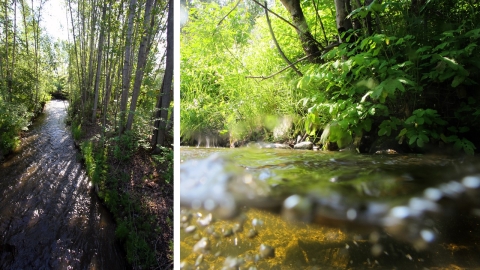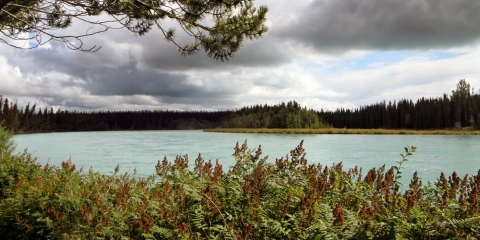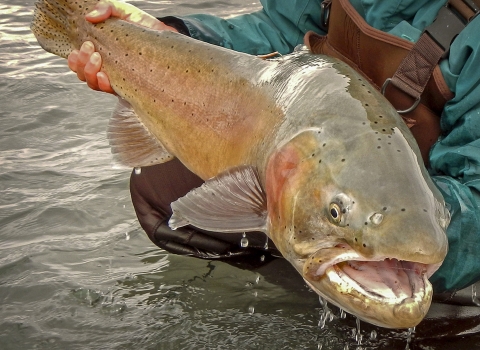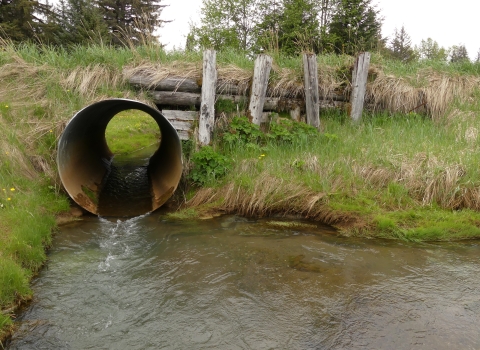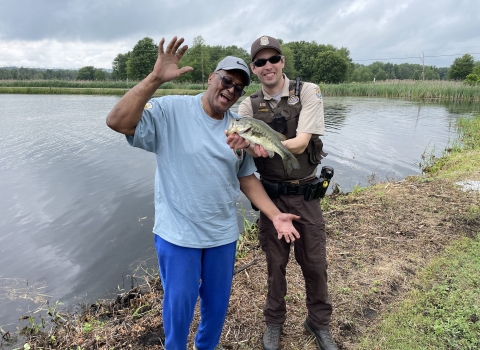We all know fish live in water, but many of us don’t realize that their world stretches up onto the banks and beyond. Sure, fish don’t occupy that space. But what happens out of the water can affect them profoundly. This story is about the quiet love affair between fish and trees.
Fish love trees…
What happens in the riparian riparian
Definition of riparian habitat or riparian areas.
Learn more about riparian zone — the land next to rivers and streams — doesn’t always stay there. Trees frequently topple over and fall in. Here, they begin a new chapter where fish, not birds, flit about their branches and roots.
A tree that is large enough and falls just right creates a spillway of water that carves out a pool downstream. If you’re a fisherman or woman, you know fish love pools. The slow water offers a place where they can escape the current. For a weary salmon migrating upstream to spawn, this break is welcome. Pools can also provide a watery refuge during drier times of year when channels get shallow.
…but not all trees are created equal
From a fish habitat perspective, it’s not just the presence of trees along a bank that’s important. Size matters and so does the species. Large conifers stabilize banks with their large root systems. When their big trunks fall in streams they tend to have a bigger impact and stay put longer. Red alders might provide important nutrients to the soils, but are thin and rapidly decay once they fall. They’re less effective at creating the complex stream habitats that give fish options. For a fish, having options is the key to survival. Diverse habitats can make all the difference for a salmon that needs a moment of rest before finding suitable gravel to lay her eggs. Or a juvenile Cutthroat Trout that would have become dinner for a predator if it weren’t for a rootwad or log jam.
Trees provide shade.
A wooded stream may be a few degrees cooler than a stream that’s lost its riparian vegetation. And a few degrees can mean life or death for fish: each species thrives within a specific range of water temperatures. Salmon get stressed when water temperatures exceed 17°C (~62°F), and may die after prolonged exposure to water just a few degrees too hot.
Trees are a key link in the food chain…
If you happen to know any fly fishing fanatics, they will happily show you prized tackle boxes full of flies. Some flies imitate the aquatic larvae of winged insects. Beneath the surface, these larvae consume, break apart, and collect bits of leaves and wood. As they drift downstream, they’re snatched up by baby salmon or adult trout. Others flies in the tackle box are tied to “match the hatch.” They resemble the nymphs undergoing metamorphosis into adult winged insects that fish key in on as they hatch en masse and dance across the water surface.
…and fish feed the trees.
In death, sometimes fish return the favor. The reciprocal exchange of nutrients from fish to trees is perhaps best illustrated with Pacific salmon. Juveniles that initially draw life from aquatic insects eventually head to sea where a smorgasbord of larger, nutritious prey awaits. With the nutrients they assimilate at sea, salmon grow big bodies that can carry thousands of plump eggs back to their home river. The return journey ends in death, and the decaying fish carcasses release the nutrients gained at sea. Wildlife and occasional flooding bring carcasses beyond the banks of the river, into the woods and meadows. Scientists have found that trees along salmon streams have the advantage over their salmon-less counterparts: the marine-derived nitrogen from the natural fish fertilizer helps the trees grow faster. In perhaps a stroke of genius, the salmon help the big trees that will someday provide big pools and habitat complexity for future generations of fish.
You can help
If you’re a waterfront property owner, DO maintain or replant native trees and shrubs along the bank and explore nature-based solutions to erosion (like rootwads from locally-harvested trees). DON’T clear vegetation down to the waters edge or use traditional riprap that has minimal value as fish habitat (e.g., concrete). An intact riparian zone where land and water meet is good for fish, wildlife, and people.
In Alaska we are shared stewards of world renowned natural resources and our nation’s last true wild places. Our hope is that each generation has the opportunity to live with, live from, discover and enjoy the wildness of this awe-inspiring land and the people who love and depend on it.




